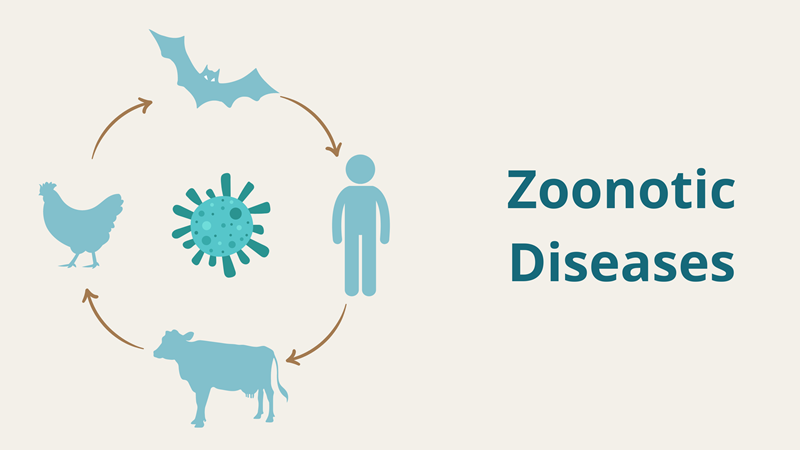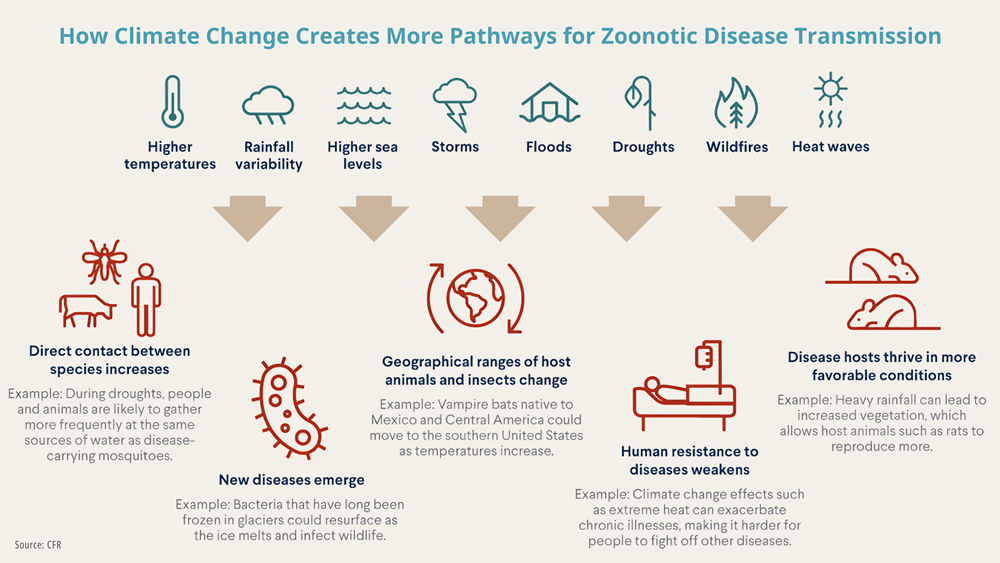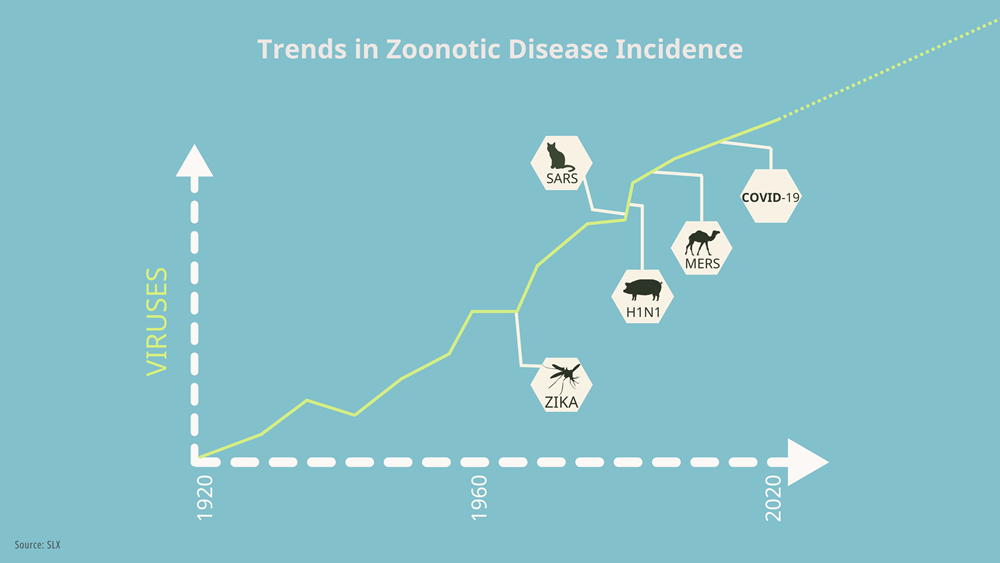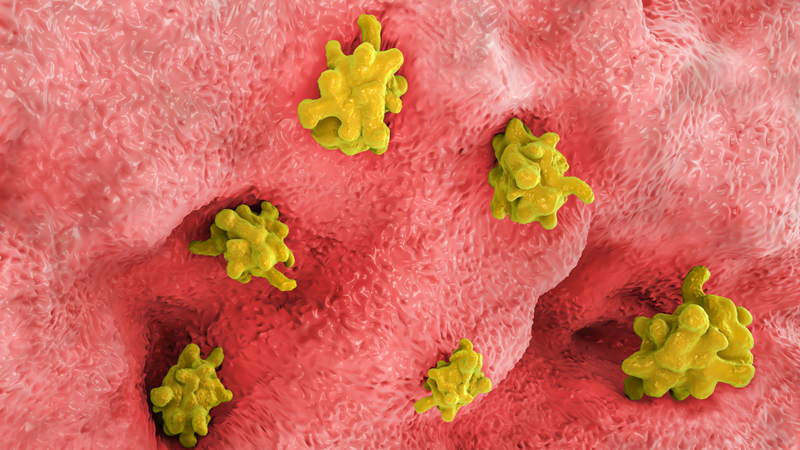Zoonotic diseases are illnesses that can be transmitted from animals to humans. In this article, we discuss the risks and global spread of zoonotic diseases.
―
Q. What is Zoonotic Diseases?
―

A: Zoonotic diseases refer to illnesses that can be transmitted from animals to humans.
The term originates from the Greek words 'Anthropos' (human), 'Zoo' (animal), and 'Nosis' (disease), meaning diseases that both humans and animals can contract. However, it is commonly used in the context of diseases transmitted from animals to humans.
In a 1952 World Health Organization (WHO) expert meeting, zoonotic diseases were defined as "diseases or infections that are naturally transmitted between vertebrate animals and humans." Just like humans being able to eat fruits that were once only eaten by forest animals, these diseases have 'jumped' from animals to humans.
The history of zoonotic diseases is as old as human history itself.
The 'Black Death,' 'Spanish Flu,' and 'Measles' that claimed numerous human lives since the beginning are examples of zoonotic diseases, as are AIDS, MERS, and COVID-19, which emerged in the 1980s and are still not fully conquered, all originating from animals.
While some zoonotic diseases like rabies can be prevented through vaccination, others like Ebola and the COVID-19 virus are harder to prevent.
Virus-caused zoonotic diseases, in particular, are challenging due to their high outbreak frequency, rapid progression, and active mutations.
<Important Facts About Zoonotic Diseases>
▪ Zoonotic diseases encompass all diseases or infections that can naturally be transmitted from vertebrate animals to humans.
▪ There are over 200 known types of zoonotic diseases.
▪ Zoonotic diseases account for a significant portion of new and existing diseases in humans.
▪ Some zoonotic diseases, like rabies, can be 100% prevented through vaccination and other methods.
<Source: World Health Organization (WHO)>
―
Q: What are the Main Causes of the Spread of Zoonotic Diseases?
―
A: Climate change is a significant factor in the spread of zoonotic diseases. Recent studies show that climate change, causing temperature rises and changes in precipitation patterns in some areas, has led many wild animals to migrate to new habitats, similar to how we seek cooler places during summer vacations.
We now live in the “Anthropocene Epoch” in Earth’s 4.6 billion-year history, when the dominant influence on Earth is mankind. Human-induced environmental destruction has triggered significant changes in the Earth's systems, and the increased concentration of carbon dioxide in the atmosphere is altering our planet's ecosystems.
If you're curious about how humans have altered Earth's systems, check out the following article! ↓↓↓ |
As a result, diseases once confined to tropical regions are now spreading to cooler areas, impacting the spread of diseases like malaria.

(Image Source: CFR)
Global warming is also affecting the spread of disease vectors like mosquitoes and ticks. It's akin to seeing more mosquitoes as summer lengthens. These vectors are sensitive to weather changes, especially becoming more active as temperature and humidity increase.
As the Earth's temperature and humidity rise, diseases transmitted by ticks, such as Lyme disease, are significantly increasing in North America.
―
Trend of Zoonotic Disease Outbreaks
―

Over the past 100 years, there has been a continuous increase in zoonotic diseases. According to reports by the World Health Organization (WHO) and the World Organisation for Animal Health (OIE), it is estimated that about 1 billion cases of zoonotic diseases occur globally each year, leading to millions of deaths.
Notably, COVID-19, which emerged in 2019, has caused the death of 15 million people (as of the end of 2021).
The future outlook is even more grim.
In 2022, a research team from the Department of Biology and the Center for Global Health Science and Security at Georgetown University in the United States published shocking research results in the journal 'Nature.' They predicted that by 2070, about 15,000 new cross-species viral infections would emerge.
As the world becomes interconnected as a single living area, viruses freely cross borders, making global cooperation imperative for infectious disease response.
―
Q: What are the Major Zoonotic Diseases?
―

A: There are about 250 known zoonotic diseases, with over 100 significantly impacting human health.
Some prominent zoonotic diseases include Anthrax, Brucellosis, Enterohemorrhagic E. coli infection, Rabies (hydrophobia), Japanese Encephalitis, and variant Creutzfeldt-Jakob disease (v-CJD).
While most can be prevented through vaccination and hygienic practices, newly emerging diseases are difficult to prevent, as seen in the COVID-19 pandemic, causing substantial global damage.
Newly emerged zoonotic diseases include highly pathogenic avian influenza (AI), Severe Acute Respiratory Syndrome (SARS), Nipah virus infection, and Hendra virus infection.
Approximately 60% of newly reported infectious diseases worldwide are zoonotic. In the last 30 years, over 30 new human pathogens have been discovered, 75% of which originated from animals, indicating a significant increase in zoonotic diseases.
―
Response to Zoonotic Diseases
―

The COVID-19 pandemic has had a tremendous impact on global health, society, and the economy, resulting in over 15 million deaths and completely altering the daily lives of people worldwide.
This crisis has highlighted the importance of international cooperation and a strong public health system.
UN Secretary-General António Guterres, responsible for global peace, emphasized the need for transboundary cooperation: “The world must prepare for the next pandemic and act according to the lessons learned from COVID-19.”
As he stated, prevention and control of zoonotic diseases are now essential not only for health but also for world peace and stability.
To achieve this, cooperation between veterinary and human health sectors and comprehensive strategies are necessary. On an individual level, practicing eco-friendly living is also vital.
What about starting with not consuming wildlife indiscriminately, practicing sustainable consumption, raising awareness about climate change, and participating in environmental protection activities?
If you're curious about sustainable consumption and production, check out the following article! ↓↓↓ Sustainable consumption and production to save the planet Find the answer in nature through Nature-based Solutions |
“We coexist on one planet, and human health is inseparably linked to the health of the planet.”
-António Guterres, UN Secretary-General-
Learn More: Sustainable consumption and production to save the planet |
References: Carlson, Colin J., Gregory F. Albery, Cory Merow, Christopher H. Trisos, Casey M. Zipfel, Evan A. Eskew, Kevin J. Olival, Noam Ross, & Shweta Bansal. "Climate change increases cross-species viral transmission risk." Nature 607, 555-562 (2022). Published on April 28, 2022. https://www.nature.com/articles/s41586-022-04788-w Rupasinghe, R., Chomel, B. B., & Martínez-López, B. (2022). Climate change and zoonoses: A review of the current status, knowledge gaps, and future trends. Acta Tropica, 226, 106225. https://doi.org/10.1016/j.actatropica.2021.106225 |
Written by Sharon Choi
Director of Planning
Sunhak Peace Prize Secretariat

